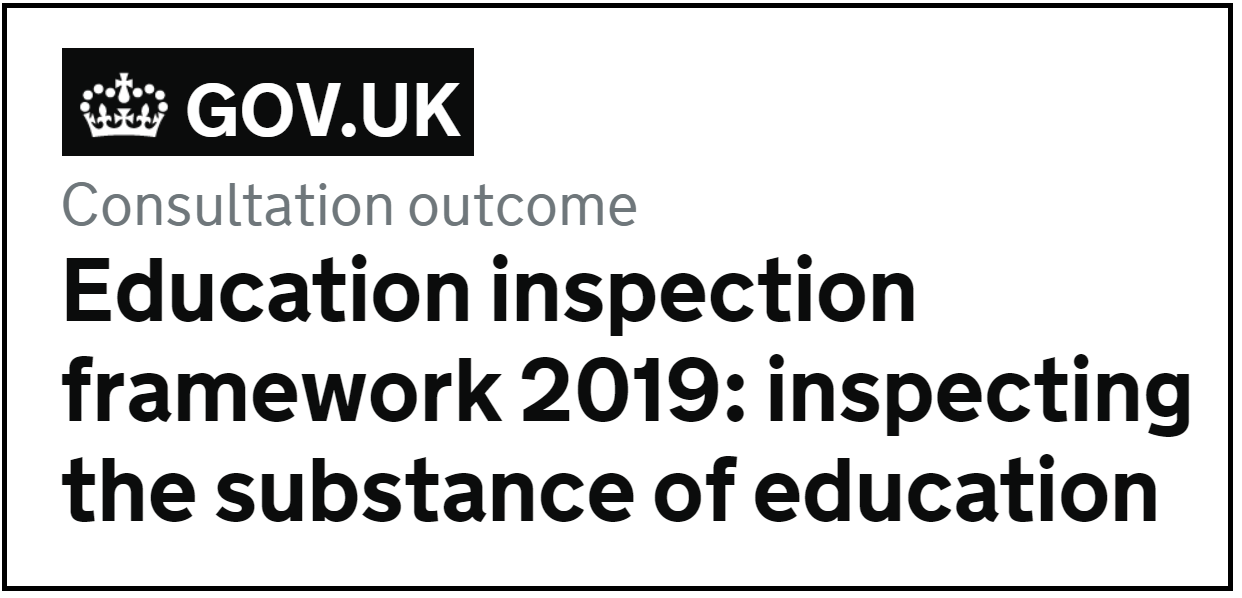Following a consultation that received an unprecedented 15,000 responses, Ofsted’s new inspection framework for education has been released today.
As must often be the case with schools, it is incredibly difficult to reconcile the positives and the negatives into a single overall judgement, so we will not attempt to do so. However, EPI has been through the new schools’ handbook with a fine toothcomb, and below we highlight the best and worst elements.
Outstanding
Ofsted has been on the front foot setting out to tackle “off-rolling” since Amanda Spielman took the helm as HMCI. Consistent with this, there is a prominent focus on identifying where off-rolling, overuse of permanent exclusion, and inappropriate use of fixed term exclusions are taking place. To realise the potential of this, Ofsted should continue to develop its data analysis and use this to pinpoint the most suspicious pupil moves for investigation. The more targeted the investigation, the harder it will be to explain away bad practice. EPI’s own methodology for highlighting unexplained pupil exits will be further developed later in the summer.
Good
There are several wider improvements to the framework which are welcome because they have the potential to promote judgements that are sharper with respect to the inclusion of vulnerable learners and fairer to schools with more of these pupils. A focus on including the experiences of children with special educational needs and disabilities (SEND) and disadvantaged children is threaded throughout the grade descriptors and this centres children with SEND better than the previous framework. The focus on avoiding a narrowed curriculum for disadvantaged groups is timely. More generally, the move towards balancing attainment outcomes with qualitative judgements of the substance of schooling has good potential provided it does not result in a reluctance to engage with patterns and trends in pupil progress. Small groups of pupils who consistently make poor progress in each year’s results are an important indicator that improvement is needed, and the size of the group should not mean that disadvantaged pupils are invisible to inspectors.
Requires Improvement
Now we turn to some of the less welcome features of the new framework. Despite the strong presence of disadvantaged pupils in the grade descriptors and the continued examination of the school’s Pupil Premium strategy, Ofsted no longer recommends Pupil Premium Reviews for schools with weak strategies or outcomes. There is a risk that this reduction in follow-up sends the wrong signal to schools about the importance of improving outcomes for disadvantaged pupils at a time when progress in closing the GCSE disadvantage gap has stalled.
A problem for the whole of the school sector that hinders our progress in meeting the needs of children with SEND is that there simply isn’t enough research evidence for this group. In particular, the Ofsted framework suffers from gaps in defining what good educational outcomes for children with SEND are, how they can be measured, and what schools need to do to support children with SEND. This isn’t the fault of Ofsted, but its future research programme should focus on practices and outcomes for children with SEND, both in mainstream schools and special schools. Given that this is one of the major vulnerabilities for exclusion and unexplained pupil exits, and that a large minority of pupils are affected by SEND, this should be a top research priority.
Having praised Ofsted’s commitment to reducing offrolling and tackling inappropriate exclusion, we must take issue with the lack of join-up between the growing evidence base on this and Ofsted’s approach to behaviour in schools. Recent research by Ofsted, EPI and the Timpson Review has consistently found that children affected by exclusions and unexplained mobility in the school system are highly vulnerable across several key dimensions. There are strong correlations with SEND, contact with social care, poor mental health and certain black ethnic categories. This has consequences for the consistency of behaviour in schools and what will be effective in reducing challenging behaviour and supporting vulnerable children. The framework does not engage with how trauma and/or atypical cognitive development affect children’s behaviour and its prescription of consistent high expectations is too superficial. Nor does it tackle cognitive biases on the part of school staff that could be linked to racial disparities.
Inadequate
Finally, we are disappointed with the omission of speaking and listening from the early years and early reading sections of the schools’ handbook. There is considerable coverage of the importance of phonics for reading development including a requirement for schools to assess phonic decoding progress term-by-term. It is deeply implausible that this assessment could be implemented with any validity. Meanwhile, other prerequisites of learning to read are entirely absent. Speaking and listening underpin the development of knowledge and memory, as well as social development and self-regulation. We are concerned that if the balance of different facets of child development encouraged by the handbook is wrong or results in ‘missing stages’ of development, the unintended consequence could be that disadvantaged children’s learning is impaired
A final reflection, having applied a four-point grading to different aspects of the schools’ handbook, is that while this is relatively straightforward to apply to specifics, it becomes much more subjective when combining judgements across a whole organisation. Perhaps this issue needs further careful consideration in the future.


